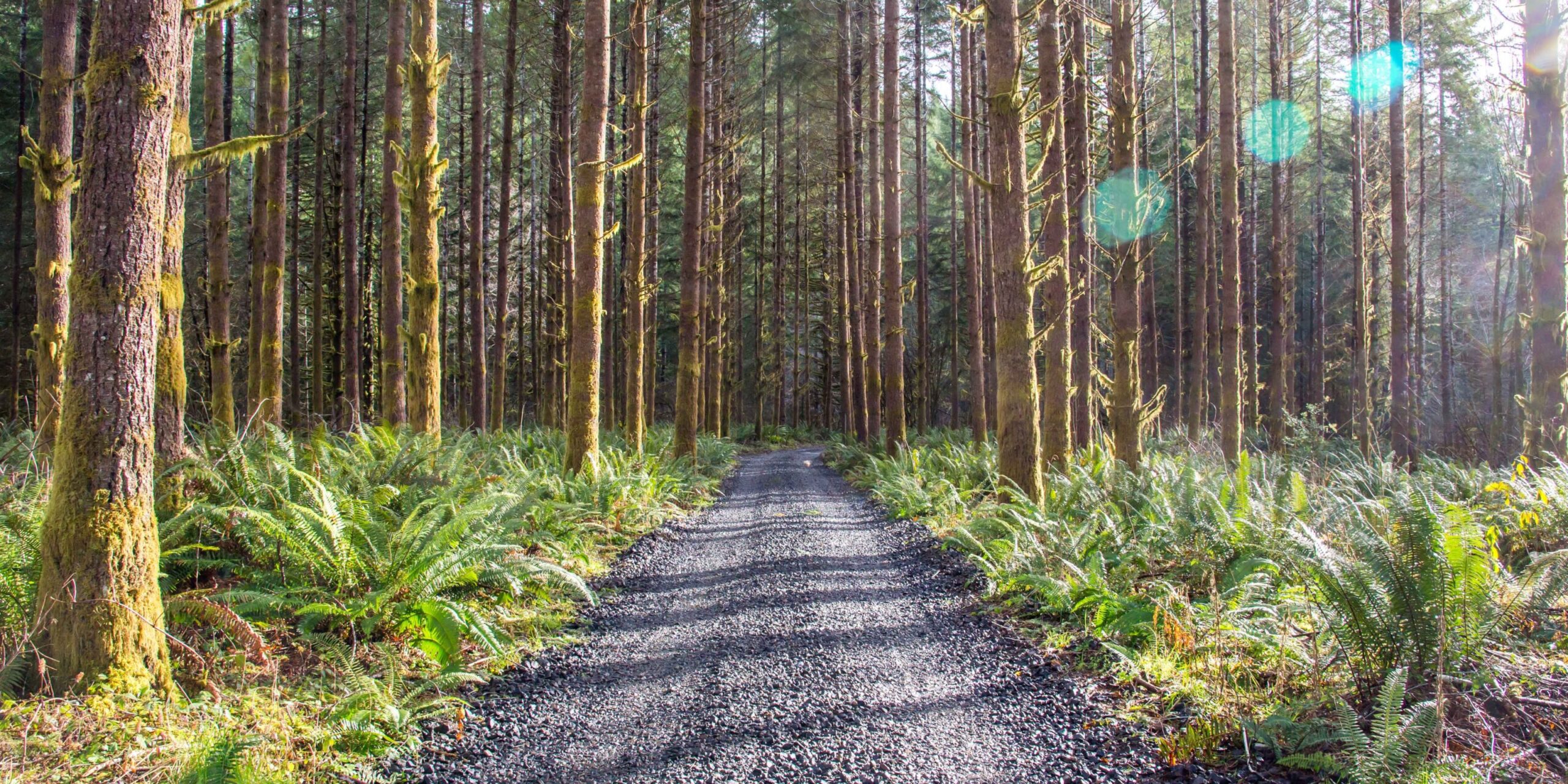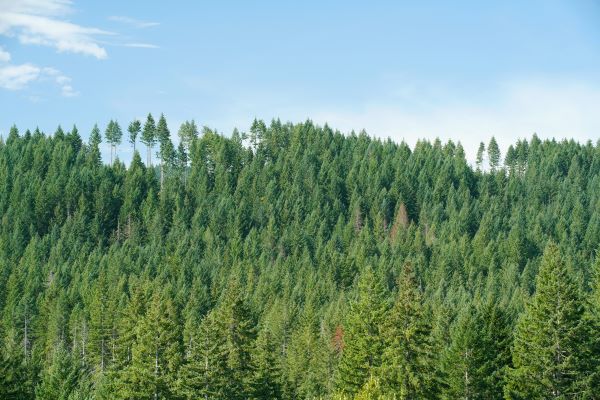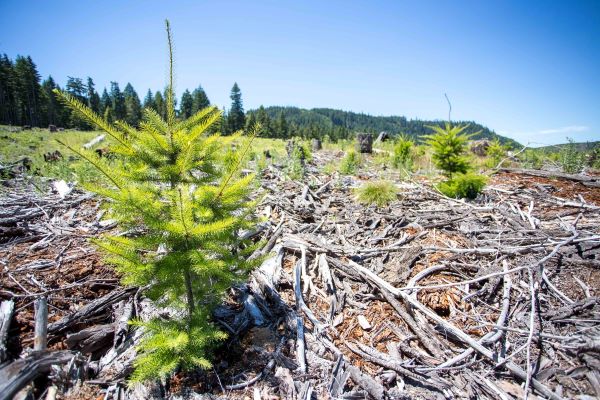
Work. Play. Renew.
What Is Reforestation?
Odds are, if you are reading this, you are already well aware of the importance of forests, both for the environment and the economy. You may also be aware that forests are an increasingly limited global natural resource: each year, more and more acres are lost as a result of development, extreme heat and drought, wildfires, and other threats. To combat this, initiatives like Oregon Forests Forever seek to highlight how the timber industry and local citizens support many ongoing reforestation programs.
In this article, we’ll explain the importance of reforestation, how it works, and how you can contribute to the protection of one of our most important natural resources.
The Importance of Forests

Forests are a crucial part of the ongoing battle against climate change since they act as “carbon sinks,” reducing the overall amount of greenhouse gases in the atmosphere. They also provide the only source of renewable, carbon-friendly building materials. Oregon alone provides billions of board feet of timber annually, more than any other state in the country, meaning that Oregon forests are both a critical source of carbon-friendly raw materials and a major provider of employment for thousands of Americans.
Beyond this, forests also have an outsized influence on the weather patterns in an area. This means that the water cycle of the entire state of Oregon is dependent on forested land. As a result, forests help to provide resources beyond their own borders, as they contribute to the yearly rainfall that keeps food-providing farms thriving. Forests also block erosion and prevent flooding, helping to protect nearby cities from inclement weather events.
Finally, the importance of forests to human mental health cannot be overstated. According to a study published by the International Journal of Environmental Research and Public Health, visiting forests seems to have a positive impact on such conditions as depression, anxiety, and even physiological conditions such as hypertension and other stress responses. Many people choose to visit their local forests when they need a break from the hustle and bustle of everyday life, choosing to reset and recharge with the help of the sights, sounds, and smells of nature.
The Biggest Threats to Forests
Despite their importance, forests all over the world are widely threatened by human activity. The very fact that they provide critical resources, such as timber, means that many forests have been over-harvested, leading to an overall reduction in their borders. Development is another common cause of deforestation, as forested areas are cleared to make more room for farmland, housing and commercial areas.
Forests also face natural threats to their survival, some of which have been exacerbated by human activity. Disease, especially that caused by fungus and parasites, can wipe out swaths of trees in one fell swoop, causing severe damage to any forest that is vulnerable to it. Fire can also greatly harm forests. While occasional fires are both natural and necessary for clearing away old, dead trees, catastrophic forest fires that rage out of control can devastate local ecosystems and release harmful carbon dioxide into the atmosphere.
The good news is that Oregon’s forests are protected by strong laws that guarantee forests remain as forests for all the numerous benefits they provide. Environmental laws ensure our forests are always replanted after harvest, strict land use and tax laws make it difficult to convert forestland to other uses, and responsible forest management uses proven tools like thinning and controlled burns to prevent catastrophic wildfires.
Reforestation: How It Works

Simply put, reforestation is actively returning trees to areas that have lost them. However, the process is actually fairly complex and nuanced. While simply planting trees is certainly an important part of it, often, there is a great deal of preparatory work that must occur beforehand. Tree seedlings are quite vulnerable to weather in the first years of their existence, and they are considered a tasty treat by lots of wildlife. Sometimes, seedlings may need to be cultivated in nurseries to give them a good start before being planted in the forest.
Reforestation may also involve the critical removal of invasive species, of which there are many in Oregon. Invasive plants, such as the infamous Scotch broom and Himalayan blackberry, can quickly take hold and choke out tree seedlings, starving them of sunlight, nutrients and water.
Once they take hold, forests can begin to regrow naturally; although, they may be vulnerable for quite a long time before they are fully established. This may mean that newly reforested areas require monitoring to prevent deer and other wildlife from grazing, which may destroy the seedlings before they really get the chance to take hold. Oregon law requires not just that harvested areas be replanted, but it also requires foresters to monitor replanted forests to ensure they are healthy and thriving into new forests within six years of reforestation.
Professional Oregon foresters take great care to reforest Oregon’s 30 million acres of forest, annually planting 40 million trees by hand to replace those that have been harvested or lost to wildfire. On average, Oregon’s foresters plant three to four trees for every one that is harvested. This guarantees our forests remain forests for future generations.
What You Can Do
There are several ways that individuals can contribute to reforestation efforts and the protection of Oregon forests. One way is to support initiatives that exist to promote responsible stewardship of the forests, such as Oregon Forests Forever. This means they have an understanding and awareness of the importance of forests to the local economy while also being aware of the benefit of active forest management so forests can continue to provide their many benefits to future generations. Carefully managing the growth of trees and harvesting them responsibly is also a major part of this, as it reduces the spread of wildfires and invasive organisms.
Additionally, we can all take precautions at home, at work and in recreation, to help keep forests thriving.
If you wish to get actively involved, you can consider volunteering with a reforestation project. You can contribute by personally planting trees or communicating the importance of forest protection to others from the comfort of your home.
[/et_pb_text][et_pb_code _builder_version=”4.19.2″ _module_preset=”default” hover_enabled=”0″ sticky_enabled=”0″][/et_pb_code][/et_pb_column][/et_pb_row][/et_pb_section]